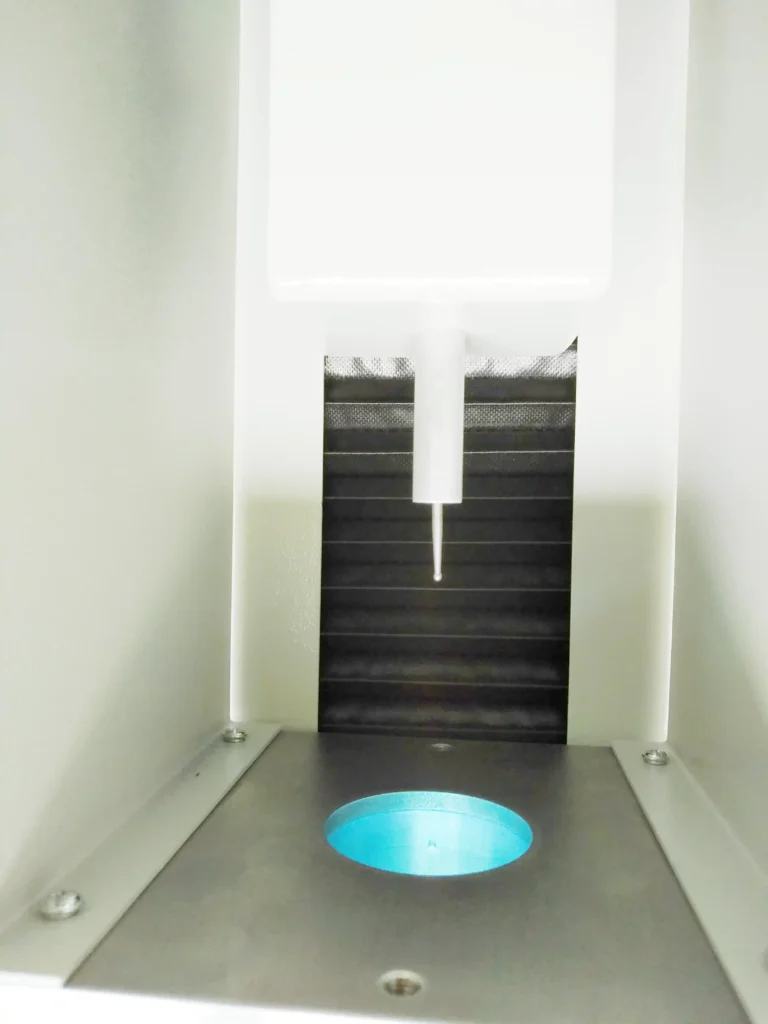ISO 17218
Intensity/Sharpness/Puncture Test for Acupuncture Needle
ISO 17218 provides a comprehensive framework for evaluating the performance of sterile acupuncture needles for single use. This standard outlines critical testing methods to assess both the intensity and sharpness of the needle tips, ensuring they meet the stringent quality requirements necessary for medical and therapeutic use.
What is ISO 17218?
Needle penetrability is a critical factor in medical device quality control, particularly for acupuncture and injection needles. Ensuring the needle tip maintains sufficient sharpness for easy penetration and intensity to resist bending or breaking is vital for patient safety and device reliability.
This article introduces two comprehensive test methodologies from a standard, designed to evaluate the intensity, sharpness, and puncture performance of needle tips. The methods incorporate both qualitative and quantitative analyses, supported by precision instrumentation.
ISO 17218 Part I: Test Methods for Needle Tip Intensity and Sharpness
What Is Intensity and Sharpness in ISO 17218?
Tip Intensity: The needle tip’s ability to resist deformation or breakage when pressed vertically against a steel block.
The intensity of the acupuncture needle’s tip refers to its ability to resist breakage when subjected to force. This is a critical factor in ensuring that the needle does not break during insertion, which could cause injury or complications. According to ISO 17218, the intensity test involves placing the needle tip vertically on a steel block and applying force until it reaches a specified load value. The needle should show no signs of bending or breaking after the test. The force applied during testing is measured, and the needle is examined under magnification to check for any damage.
Tip Sharpness: The minimum force required to pierce a standard aluminum foil.
The sharpness of the needle is another critical factor in ensuring its effectiveness. A sharp needle requires less force to penetrate the skin or other materials, which reduces discomfort for the patient and ensures more efficient treatment. The sharpness test, as outlined in ISO 17218, involves using the needle to pierce aluminum foil. The force required to penetrate the foil is measured, and the needle’s sharpness is evaluated based on this force. The test provides a quantitative measure of the needle’s sharpness, ensuring it is within the required limits for safe use.
These properties are essential for assessing both the durability and ease of penetration of needles.
Intensity Test Procedure
Clamp the needle with 5 mm of its tip exposed.
Apply vertical force onto the steel block at a controlled speed.
Hold for 5–10 seconds and release.
Inspect under 5x magnification:
No bends or hooks allowed.
Drag test across cotton: must not pull fibers.
Sharpness Test Procedure
After the intensity test, keep the needle in the apparatus.
Gradually apply force to pierce the aluminum foil.
When contact is made with the electrode, the force is automatically recorded.
This force value indicates the needle’s piercing sharpness.
ISO 17218 Part II: Puncture Performance Test Methods
What Is Puncture Performance in ISO 17218?
This segment provides qualitative and quantitative methods for evaluating the complete puncture performance of needle tips. Suitable methods should be selected based on needle type and usage scenarios.
Method A: Qualitative Puncture Test
This is a rapid, subjective assessment useful for quality control.
Procedure:
Stretch a surgical rubber glove membrane (ISO 10282 compliant) over a 100 mm diameter cup.
Secure with a rubber band.
Perpendicularly puncture the membrane using the needle.
Observe:
Small dent and minimal resistance = sharp tip.
Large dent and noticeable resistance = blunt tip.
Method B: Quantitative Puncture Test
This method offers detailed, measurable data.

B.1 Apparatus Specifications
Movement speed: (50–250) mm/min
Speed accuracy: ±5%
Sensor range accuracy: ±5%
Clamped film puncture area: 10 mm
B.3 Procedure
Clamp the polymerized film in the apparatus.
Mount the needle perpendicularly above the center of the film.
Move at 100 mm/min until the needle punctures through.
Record force-displacement curve.
Identify and log key force peaks: F0, F1, and F2.
B.2 Polymerized Film Specifications
Material: Elastic polyurethane
Thickness: (0.35 ± 0.05) mm
Hardness: (85 ± 10) Shore A
Conditioning: Store at (22 ± 2) °C for 24 hours before testing
B.4 Definitions of Force Peaks:
F0</sub: Peak force when the tip first punctures
F1: Peak force of the needle’s slant cutting through the film
F2: Frictional resistance from the needle body passing through the film
Compare the coordinate curves and force values with control samples to determine the needle’s puncture performance.
ISO 17218 provides a vital set of guidelines for testing the intensity and sharpness of acupuncture needle tips. By following these standards, manufacturers can ensure that their products meet the necessary quality requirements for safe use. Whether for quality control or product development, adhering to ISO 17218 guarantees the effectiveness and safety of acupuncture needles.
